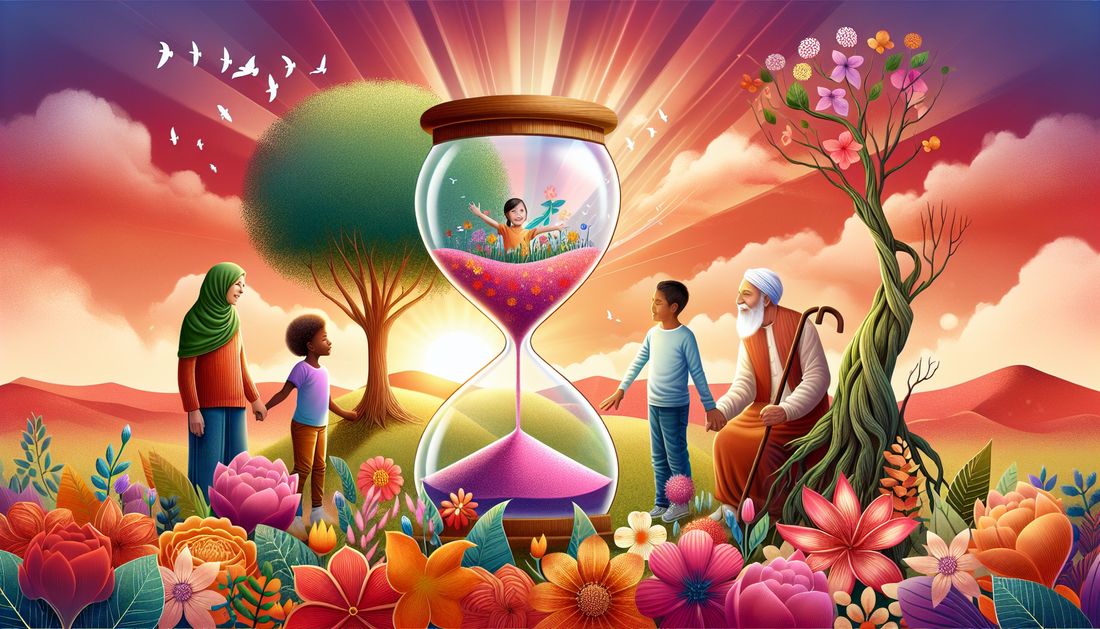
Closing the Gap Between Longevity and Aging Through Technology and Policy
Heath Wells HealthShare
In an era marked by rapid advancements in technology, experts are converging to bridge the gap between longevity and aging through comprehensive policy reforms. This transformation seeks to leverage both scientific breakthroughs and sociopolitical initiatives to extend healthy life spans and ensure a quality of life for all.
- At the forefront is Dr. Sarah Thompson, a leading gerontologist from MIT, championing the integration of AI in elderly care to predict and prevent age-related ailments. 🧬
- In Silicon Valley, tech startups like AgeTech Labs are innovating wearable devices that monitor biomarkers, aiming to catch diseases before they progress.
- The World Health Organization held a summit in Geneva on July 20, 2023, where global policymakers laid out a roadmap to incorporate technology into aging populations' healthcare.
- Nations like Estonia are pioneering digital health records, improving accessibility and continuity of care.
- Health and Human Services Secretary Janet Lynch emphasized the importance of equitable access to these technologies at a policy forum on August 15, 2023, in Washington, D.C.
- Advocates highlight the role of community education in embracing these changes, ensuring older adults aren't left behind in the digital revolution. 📱
By aligning technology with targeted policies, society inches closer to a future where longevity doesn't compromise the vitality of aging populations. 🌍
In the 21st century, the global perspective on aging and longevity is rapidly evolving. A recent discourse on this significant topic revolves around the contrast between longevity and aging. The gap between these two concepts highlights the challenges and opportunities in contemporary society. With populations living longer than ever, the focus is not just on extending life expectancy but also on enhancing the quality of life during those extended years.
One of the critical points in this conversation is the distinction between chronological age and biological age. Longevity refers to how long a person lives, while aging relates to the physiological and psychological changes that occur over time. As individuals age at different rates, a person's biological age may not correspond with their chronological age. This nuance suggests that policies and health interventions should not adopt a one-size-fits-all approach but rather tailor strategies to meet individual needs.
Several global initiatives, including the World Health Organization's (WHO) Global Strategy and Action Plan on Ageing and Health, emphasize this tailored approach. Launched in 2016, this initiative aims to foster “healthy aging” by aligning health systems with the needs of older populations. The emphasis is on promoting good health practices and creating environments that support well-being in later life stages.
This focus on healthful longevity aligns with various research findings that suggest lifestyle choices significantly influence aging processes. Studies by institutions like the National Institute on Aging point to the pivotal role of diet, physical activity, and mental engagement. These factors, coupled with genetic predispositions, determine an individual's biological age.
The Role of Technology in Healthy Aging
Technological advancements provide opportunities to bridge the gap between longevity and aging effectively. Innovations in healthcare technology, such as wearable health monitors and telehealth services, are instrumental. These tools enable early detection of health issues, promote preventative care, and facilitate remote consultations, making healthcare more accessible to the elderly.
In cities like Tokyo and Paris, smart home technologies are being integrated to assist older adults in maintaining independence. These technologies not only enhance the quality of life but also ensure safety and security, allowing for greater autonomy as individuals age. The adaptation of such technologies is a testament to society's commitment to addressing the challenges posed by an aging population.
Community and Social Engagement
Another crucial aspect of promoting healthy aging is fostering community and social engagement. Isolation and loneliness can significantly affect the mental and physical health of older adults. Community centers, like the AARP Foundation Experience Corps in the United States, are initiatives that encourage social interaction and continuous learning. They offer programs that engage older adults in community service and mentoring, improving cognitive health and overall well-being.
The importance of community is reflected in policies across global cities. Urban planning now includes senior-friendly infrastructure, parks, and transportation systems. This proactive approach enhances mobility and encourages participation in community activities, reducing feelings of isolation among older citizens.
Policy Implications and Future Directions
The increasing emphasis on healthy aging calls for comprehensive policy interventions. Governments worldwide are reevaluating retirement ages, pension systems, and healthcare funding to accommodate longer lifespans. Policies that support lifelong learning and retraining programs are essential, enabling older individuals to continue contributing economically and socially.
The United Nations declared 2021-2030 as the Decade of Healthy Ageing. This initiative seeks to improve the lives of older people, their families, and communities by fostering collaboration among governments, civil societies, and the private sector. It underscores the need for multisectoral approaches to address the diverse needs of an aging population.
Conclusion: Bridging the Gap
Addressing the gap between longevity and aging requires a multifaceted strategy. This includes individual, community, and global efforts driven by advances in technology, health research, and supportive policies. Ensuring that individuals not only live longer but remain active, engaged, and healthy is the ultimate goal. Such a holistic approach promises a better quality of life for the aging population and a more sustainable society overall.











